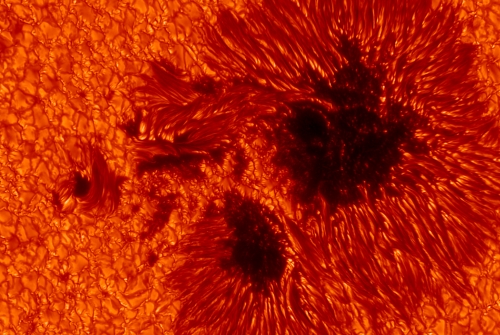A&A Press Release - No evidence of planetary influence on solar activity

Based on the article “No evidence of planetary influence on solar activity”, by R. Cameron & M. Schüssler
Published in Astronomy & Astrophysics, 2013, 557, A83
In 2012, Astronomy & Astrophysics published a statistical study of the isotopic records of solar activity, in which Abreu et al. claimed that there is evidence of planetary influence on solar activity. A&A is publishing a new analysis of these isotopic data by Cameron and Schüssler. It corrects technical errors in the statistical tests performed by Abreu et al. They find no evidence of any planetary effect on solar activity.
The Sun is a magnetically active star. Its activity manifests itself as dark sunspots and bright faculae on its visible surface, as well as violent mass ejections and the acceleration of high-energy particles resulting from the release of magnetic energy in its outer atmosphere. The frequency with which these phenomena occur varies in a somewhat irregular activity cycle of about 11 years, during which the global magnetic field of the Sun reverses. The solar magnetic field and the activity cycle originate in a self-excited dynamo mechanism based upon convective flows and rotation in the outer third of the solar radius.

Systematic observations of sunspots since the beginning of the 17th century indicate that solar activity also varies on longer timescales, including periods of very low activity, such as the so-called Maunder minimum between 1640 and 1700. Analysis of radioactive isotopes in tree rings and in polar ice sheets show that other such grand minima of solar activity have occurred over the past millenium, and also revealed a number of quasi-periods in the activity variations, ranging from 80 to about 2000 years. Before the magnetic nature of sunspots and other phenomena were discovered, a popular theory associated the activity cycle with the planetary orbital periods, primarily motivated by the similarity between the approximately 11-yr solar cycle and the 11.87 orbital period of Jupiter. In principle, the planets can affect the Sun by exerting tides (similar to terrestrial ocean tides caused by the moon), but these effects are extremely tiny (tide heights of a few millimeters, at most) in comparison to all other dynamical forces. Furthermore, detailed statistical analyses have time and again shown that apparent similarities between some planetary periods and solar activity variations were consistent with chance and were statistically insignificant.
With a new reconstructed record of solar activity, inferred from the radioactive isotopes of beryllium and carbon in ice cores covering the past 9400 years, Abreu et al. (2012, A&A, 548, A88) have recently revisited this issue. They compared the quasi-periods found in this data set between 40 and 600 years with periods in the tidal torque exerted on a thin shell in the solar interior, which they assumed to be ellipsoidally deformed. Abreu et al. found seemingly striking similarities between the solar and the planetary periods in 5 period bands. Their statistical analysis appeared to show that these coincidences are not due to chance, which would mean that the planets affect solar activity after all.
In a new paper published in A&A, R. Cameron and M. Schüssler, however, identify subtle technical errors in the statistical tests performed by Abreu et al. Correcting these errors reduces the statistical significance by many orders of magnitude to values consistent with a pure chance coincidence. The quasi-periods in the isotope data therefore provide no evidence that there is any planetary effect on solar activity.
No evidence for planetary influence on solar activity, by R. Cameron and M. Schüssler.
Published in
Astronomy & Astrophysics,
2013, DOI 10.1051/0004-6361/201321713
Free
access to the article
Contacts:
Dr. Robert Cameron
Email: cameron (at) mps.mpg.de
Phone: +49 5556 979 449
Prof. Manfred Schüssler
Email: msch (at) mps.mpg.de
Phone: +49 5556 979 469
Max-Planck-Institut für Sonnensystemforschung
Max-Planck-Str. 2
37191 Katlenburg-Lindau
Germany
Dr.
Jennifer Martin
Astronomy &
Astrophysics
61, avenue de l'Observatoire
75014 Paris, France
Email: aanda.paris (at) obspm.fr
Phone: +33 (0)1 43 29 05 41
© Astronomy & Astrophysics 2013

